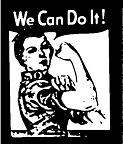home / teaching reading / homeschooling / gifted kids / breastfeeding / crafts |
|
|
"A good education for every child
does not mean the same education for every child. " Please use what works for you and your
child and ignore the rest. Every
child is different. If this
information does not seem to be a good fit for your particular child, then
keep looking and experimenting until you find what works. This Web Page by Pauline
Harding for Art Nurk, hardingpj@yahoo.com |
Phonological awareness is a global term that includes an awareness of anything to do with the sounds of language, from the sounds of words in sentences, to the syllables in multisyllabic words, or to individual sounds. Phonological awareness is the single best predictor of at-risk status for early reading difficulties. One of the best classroom-based indicators of risk for difficulty with reading is an inability to invent spellings for words during kindergarten or early first grade. Phonics is about associating letters or combinations of letters with certain sounds. Phonemic awareness is about discerning and manipulating sounds within words. “Children with well-developed phonemic awareness can segment, identify, locate, and sequence sounds. They can distinguish between hug and bug. They know that hug starts with /h/ and bug starts with /b/. They recognize that the middle and final sounds of both words are the same. Phonemic awareness is a precursor to reading and begins to develop during the preschool years. Phonemic awareness progresses through five levels of difficulty: 1. Sensitivity to rhyme 2. Matching words by beginning sound or by rhyme 3. Separating a word into onset (the first sound) and rime (the ending sound), e.g. map = /m/ /ap/. 4. Segmenting all phonemes, e.g. map = /m/ /a/ /p/. 5. Manipulating phonemes, e.g. seat without /s/ = /eat/; cat reversed is tack.”1 Rhyming Games and other Games for Phonemic AwarenessMost kids love rhyming-type games. If they are particularly difficult for your child, you may find that your child will need more practice with phonemic awareness (breaking down words into their component sounds), and may benefit from a more formal, phonics-based reading program. See Overcoming Dyslexia in the bibliography. These games are fun, and will help you to assess your child’s phonemic skills as well as to improve them. A little bit goes a long way – play with five or ten words at a time, perhaps in between reading aloud. SyllablesClap the rhythm of a word’s syllables. “Matt” has one clap, “bottom” has two: “bot” (clap) “tom” (clap). Supercalifragilisticexpealidocious (did I spell that right?!) has 14. Rhyming BooksBooks that have rhythm and rhyme, like Sandra Boynton’s Barnyard Dance, are great for learning to read. When you read rhyming books (especially familiar ones), you can sometimes leave off the last word and let the child fill it in. Rhyming TennisOne person says (lobs) a word, then the other person has to think of a word that rhymes with it (hits the rhyme back over the net), then the first person has to think of another word that rhymes, and so on – see how long you can keep it going! Rhyming DictionariesRhyming dictionaries can be loads of fun. Just reading the entries can be almost like reciting poetry. Star, guitar, wet bar, bizarre! Try www.rhymezone.com Rhyming vs Starting with the same LetterPlay with and talk about the difference between rhyming, where the words sound the same at the end, and “starting with the same letter”, where they sound the same at the beginning (called alliteration). Also play with words that sound the same in the middle – cat and map, etc. Listening Carefully To Word SoundsPlay games that encourage kids to listen carefully to the sounds that make up words. Here’s one – give three words and ask which one does not rhyme – “Walk, tack, whack”. You can do a ton of variations on this, like choosing the word that starts with a different letter, or the word that has a different vowel sound. Don’t go overboard with this – just three or four sets at a sitting is fine, unless you’re on a roll. Where is the Sound?Use three paper cups – one each for “beginning”, “middle”, and “end”. Ask “where is the “buh” sound in “bat”? Have the child put an M&M into the “beginning” cup. Try the “guh” in “hug”, or the “ee” in “jeep”. Harder still are thing like (using four cups) where is the “l” in “calm”. Mixed Up wordsWhat is cat if you switch the /t/ sound with a /p/ sound? (cap) What is cheek if you replace the long e with a short I? (chick). What is paper without the per? (pay). Adding PhonicsBegin adding phonics work by introducing the letters that stand for the sounds. For example, make a magnetic word wall or write words on index cards and sort the words by beginning letter, or by ending sound – hop, pop, mop, hat, pat, mat, etc. Phonograms (Endings) for Rhyming Games-ack -ail -ain -ake -ale -ame -an -ank -ap -ash -at -ate -aw -ay -eat -ell -est -ice -ick -ide -ight -ill -in -ine -ing -ink -ip -ir -ock -oke -op -ore -or -uck -ug -ump -unk 1 The quote and some of the ideas
at the top of this page come
from a workshop handout given to me by a friend. Unfortunately, I don’t have any information about the
author, (though they reference “Birsh”), so I cannot give the appropriate
credit for this info. |
